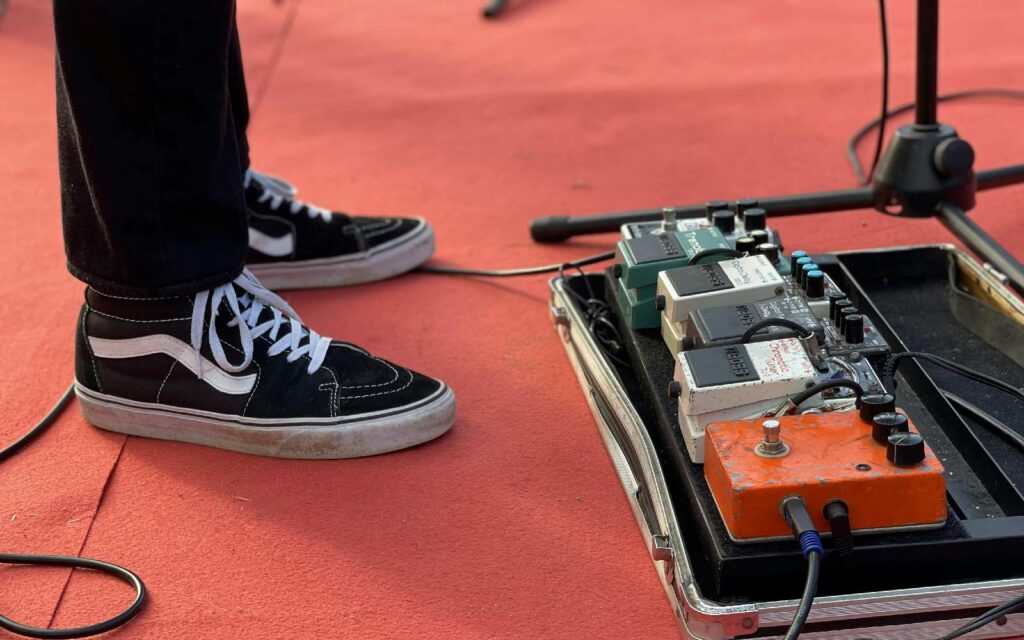This is one of the greatest problems with home recording, as the room often needs to be improved when you improve the microphone within it. Keeping the microphone safe and secure from unwanted vibrations is also essential, and a good suspension mount and a few boy scout tricks can greatly improve the end result. The key is to keep the capsule isolated from unnecessary vibration, which results in unwanted noise.
FROM THE FLOOR UP
Before we even consider how the microphone is mounted to the stand, let’s look at the stand itself and where that is placed. Of course, you may be limited to where this is going to be, as you need to achieve an optimal microphone placement and so you’ll be limited to the floor space on which the stand is placed. If you have several rooms that can be used, consider the floor in each and look at how much give it offers. Solid floors like concrete and tiles don’t move much at all, but floating floors and timber floorboards often have a bit of movement in them that relate to not only the people in the room, but also traffic outside.
This might not seem like much, in fact you can’t actually hear the floor moving in most cases, but the vibrations caused by this movement, especially from traffic outside the building can directly translate into low frequency rumbling in your microphone signal. And it’s often not enough to just rely on a high pass filter to squeeze this out; treating it at the source is the better option.
A thick carpet or rug under the microphone stand, especially with some added underlay will instantly reduce the amount of vibration that gets into the stand, reducing the need for a serious suspension mount to begin with. Of course, if you have musicians recording in the room that like to jump about and get fairly active while they play, you’ll need to go one step further.
AT THE MICROPHONE
The other point of contact that needs to be dealt with is where the microphone is mounted onto the stand itself. A number of condenser microphones come with specific suspension mounts to take care of this, however most usually come supplied with a rigid mount that offers little to no isolation, and really just serve as an extension of the microphone stand. This is the critical point that needs to be dealt with to ensure low frequency rumbling doesn’t find its way into the recorded signal.
A suspension mount acts to break up the rigid connection by the use of rubber, or material bands to hold the cradle in which the microphone sits. This allows the vibrations to dissipate into the rubber and not find their way into the housing of the microphone, and thus into the capsule itself.
Another point to consider is keeping the capsule free from unwanted air movement, which ends up translating into vibrations and unnecessary sound in your record, whether it be from a vocalist’s breathe, or air movement from a speaker cabinet. Mounting a pop filter in front of the microphone will take care of this in most circumstances, but just be sure that it doesn’t interfere with the suspension mechanism and keeps the microphone separated from the rigid structure of the stand.
Of course, this is all relative to the microphone you are using, along with the room and setup. A lot of people get it into the heads that they need to buy the most expensive microphone they can afford to get the best sound. It’s not always the case, and the better microphone usually requires more work and a better room in order to get the results. Having several lower priced microphones with appropriate stands and isolation for them is going to deliver better results, especially when you are working against some environmental noise and the need to record at lower gain levels to keep this down.
When you are working with lower gain structure, the microphone’s self-noise really comes into play, as does any noise from the microphone’s casing caused by resonant vibrations. Of course, this is what happens when recording at home, and even more so when you have to worry about neighbours, so you end up recording at lower volumes too. Every time you turn the instrument or amplifier down, you are essentially turning up the environmental and vibration noise in the signal. Take this into account and be very weary of what is getting into your microphone’s capsule with each setup, as it will directly reflect in the final results of your recording.







